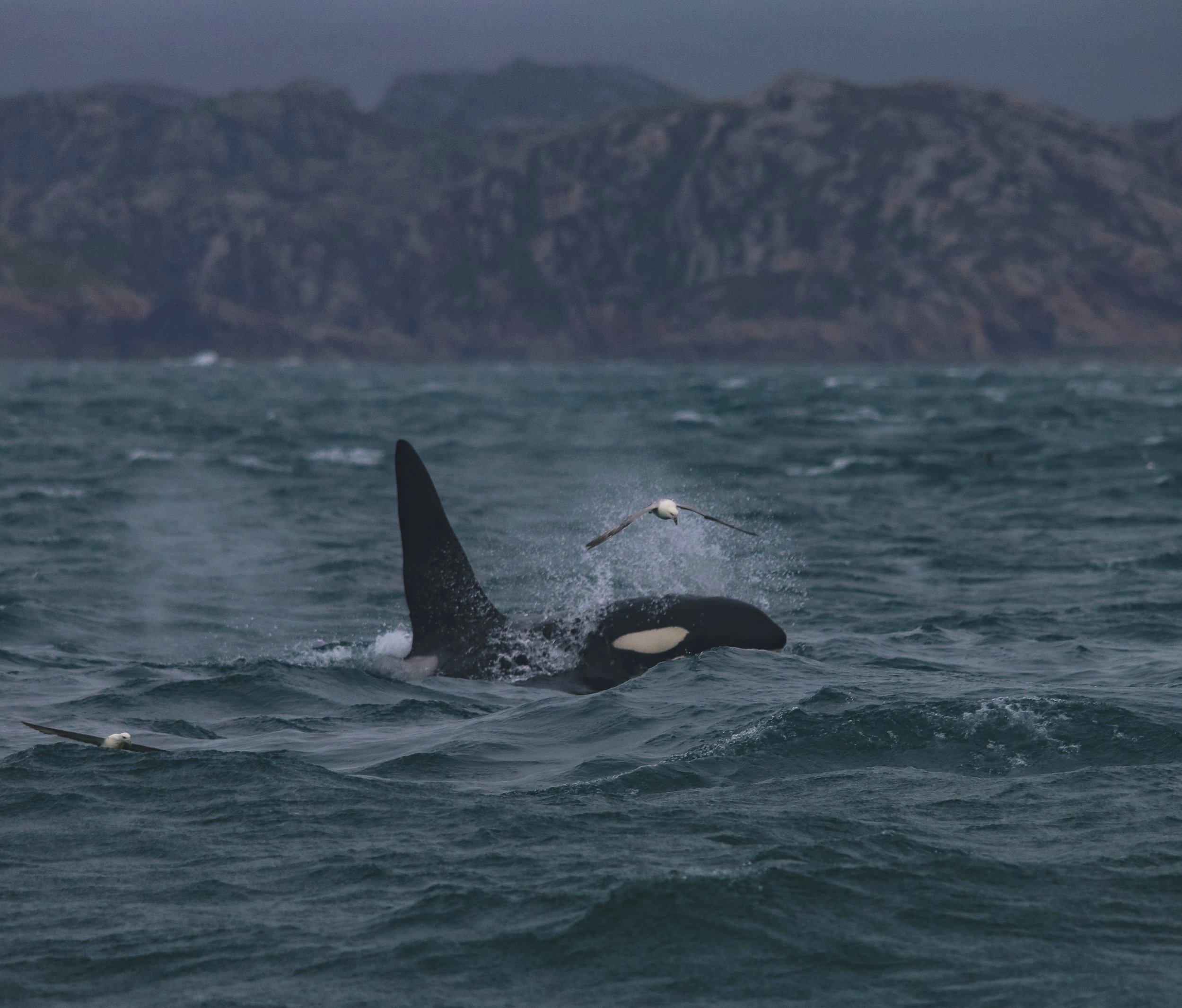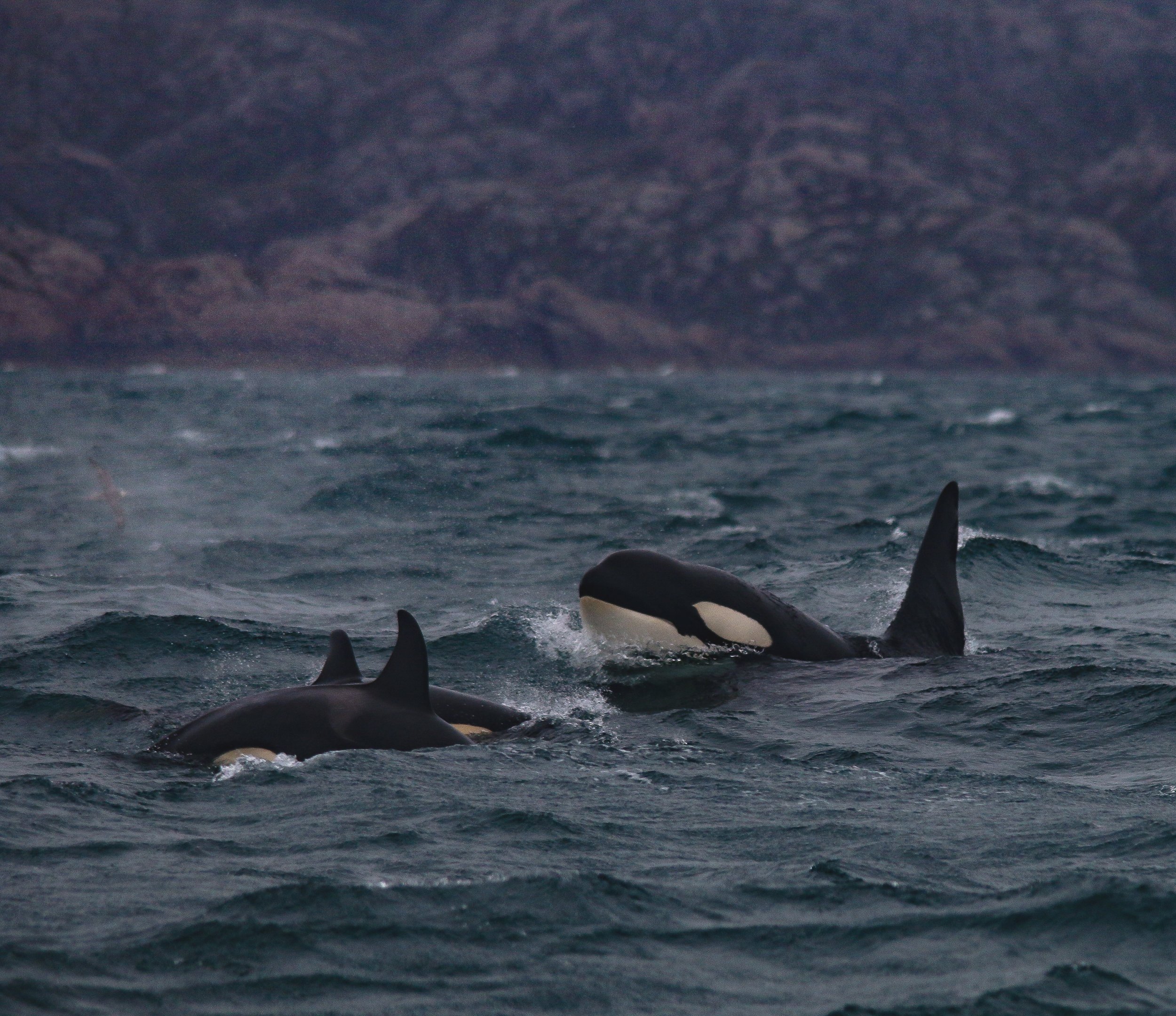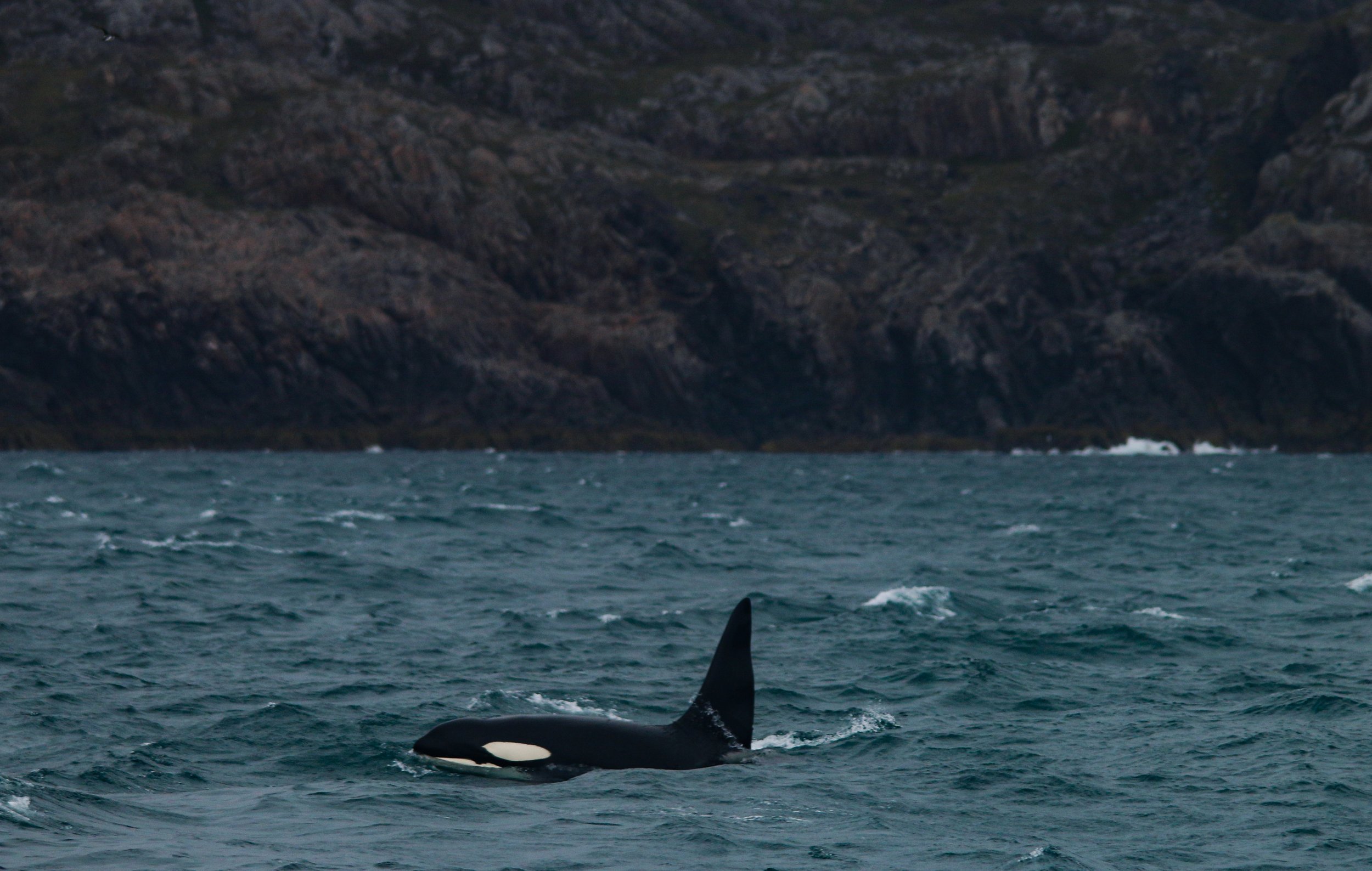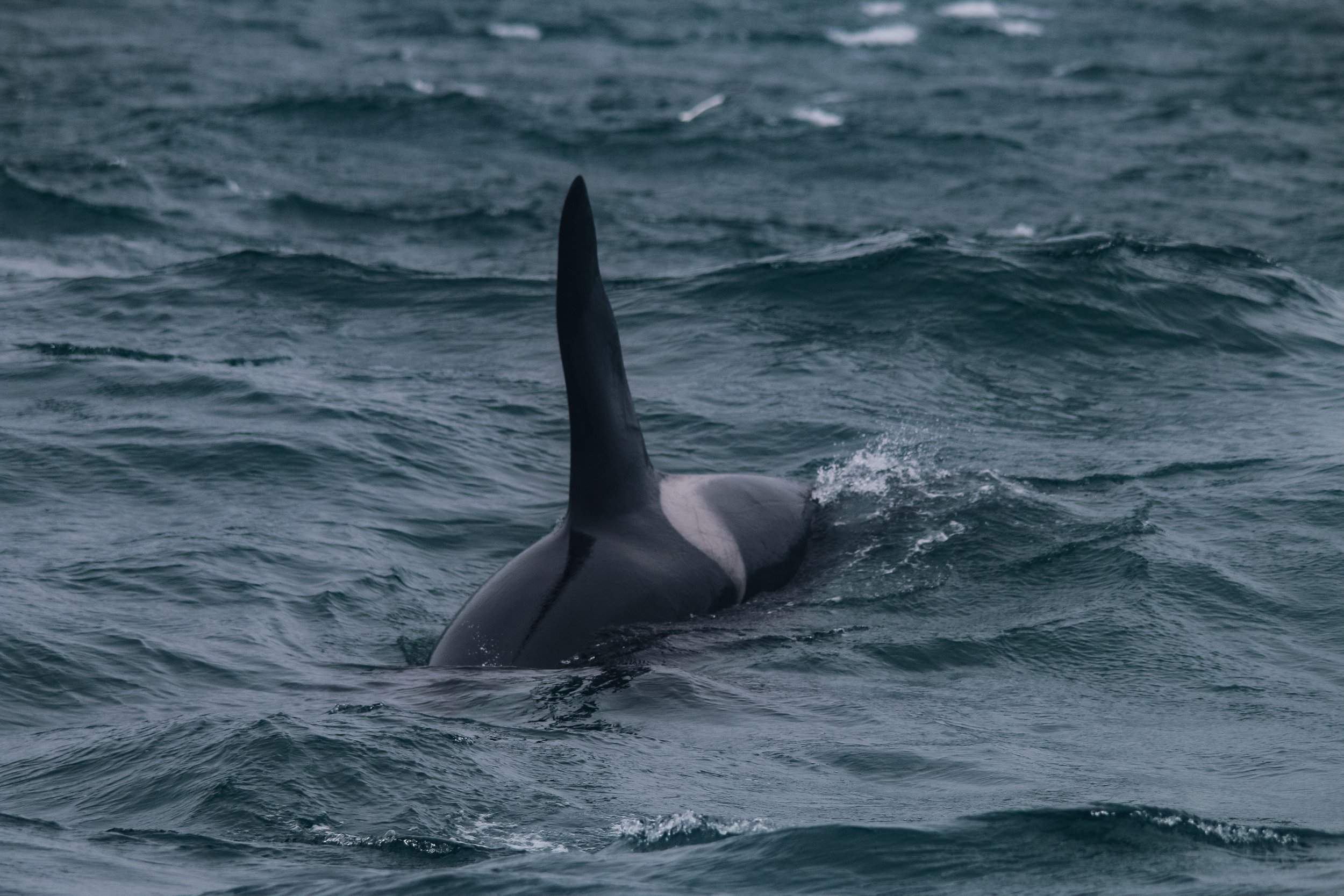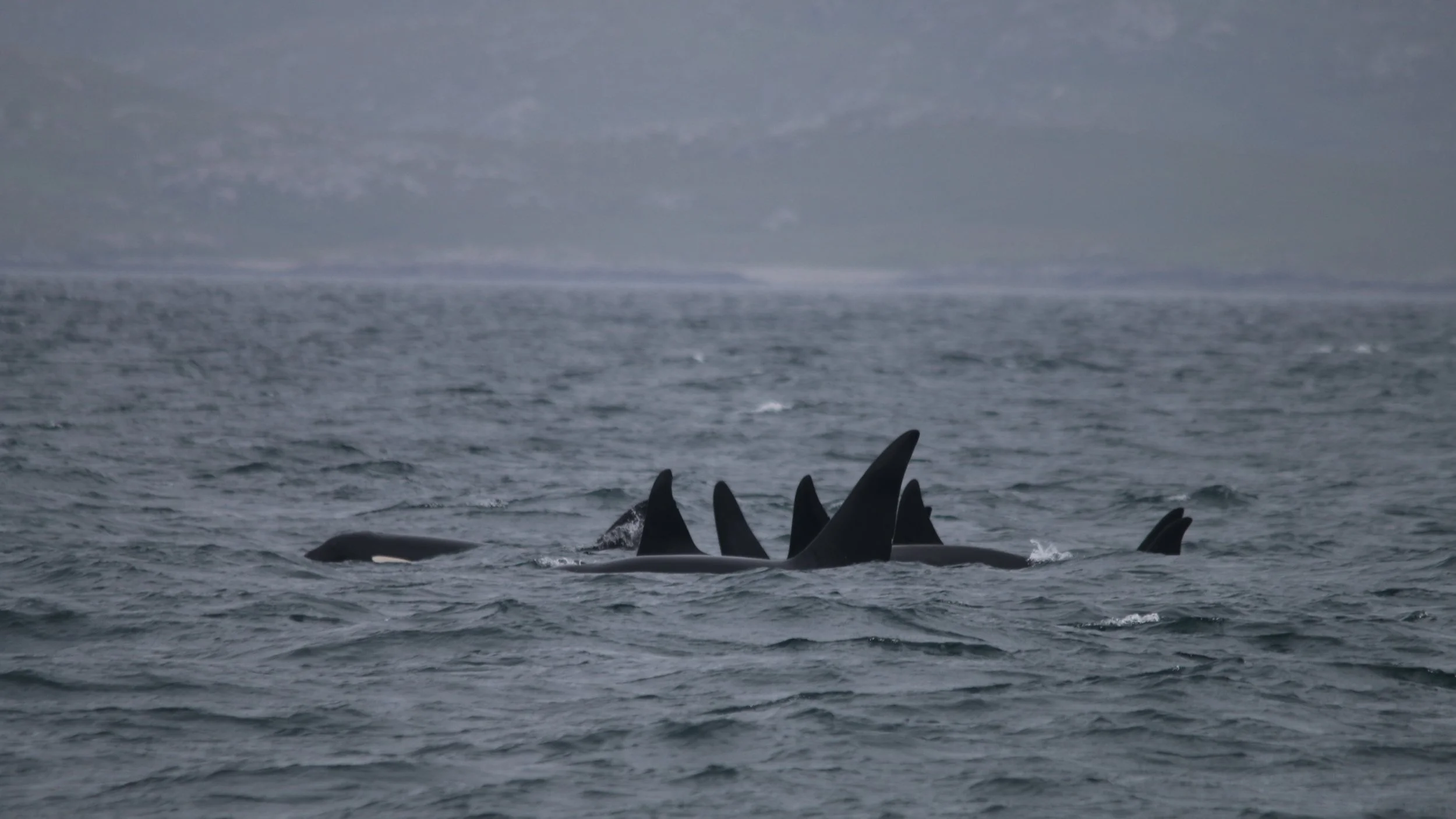It's not all black and white...Scottish Killer Whales
Orca Watch is a ten-day event coordinated by the Seawatch Foundation, which aims to gather data on killer whales off our coasts. Enthusiastic citizen scientists will be keen to catch a glimpse of these apex predators, keeping watch all around Caithness, North Sutherland, Orkney and Shetland. But it’s not all black and white when it comes to killer whale populations in Scottish seas…
Killer whales, or orcas, are found across all the world’s oceans; from the Arctic to Antarctic. Though widespread, disparate communities have evolved with differing appearances, vocalisations and hunting techniques - effectively different cultures. These different populations are now recognised by researchers as distinct ecotypes within the wider species (Orcinus Orca). We are beginning to understand how unique some of these groups are. Off the west coast Scotland, we have recorded at least three ecotypes.
WEST COAST COMMUNITY
Scots Gaelic for killer whale - madadh-cuain, or 'ocean wolf' – is apt as individuals working together as a unit to take down prey, sometimes much larger than themselves. The West Coast Community are thought to hunt other cetaceans exclusively. In 2008, one of the males – thought to be Moon - washed ashore on Lewis and was found to have minke whale baleen in his stomach contents. Predation on porpoises has also been witnessed, however the West Coast Community have never been documented hunting seals or fish.
Members of the West Coast Community are much larger than others found off Scottish coasts, their distinct sloping eye patch and unique tooth ware can also be used to identify members of this ecotype
NORTHERN ISLES COMMUNITY
In stark contrast, the Northern Isles Community killer whales are opportunistic hunters with a smorgasbord of a diet; from eider ducks and seals to mackerel and herring. Frequently seen off the coasts of Shetland, Orkney and the northern coast of mainland Scotland, some of these killer whales travel between Iceland and Scotland – with dorsal fin photos providing matches of individuals between the two countries.
There has never been a record of any of these killer whale populations interacting. No West Coasters have ever been spotted with their cousins from the Northern Isles. They have developed different cultures, different hunting strategies, different ranges, even different sizes – the West Coast Community are about a metre bigger!
MYSTERY POD REVEALED!
In 2018, an unrecognised pod of killer whales was spotted in Loch Laxford, prompting our scientists to share the dorsal fin images with other organisations and researchers to attempt a match. Fast forward to 2021 and the pod surfaced again…this time off Norway! This match was significant in that it was the first ever confirmed match between Scotland and Norway. The breakthrough came after citizen scientist Asmund Aasheim photographed a pod of six whales in Børøyfjorden and sent his pictures to the Norwegian Orca Survey, where Dr Eve Jourdain found that the killer whales were not familiar from Norwegian records. Using the Scottish Killer Whale Catalogue, Dr Jourdain was able to match the individuals to those spotted off Silurian three years earlier. Perhaps these individuals are part of the poorly understood off-shore population of killer whales? Only with continued monitoring can we hope to find out more.
The ‘mystery pod’ encountered during a research expedition on board Silurian in 2018
CITIZEN SCIENCE IS KEY
Much of what we know about the different killer whales which ply our waters has come from people recording data and submitting images for Photo-ID analysis. These citizen scientists have deepened our understanding of the different killer whale populations off Scottish coasts and are helping to piece together the jigsaw of their lives. If you have spotted a whale, dolphin, porpoise or basking shark, please report it via Whale Track - we have a free app you can download to your phone, or you can also submit sightings records through the website.
While the population in the north is thought to be stable, the West Coast Community are in peril. In recent years, only the two old males - John Coe and Aquarius - have been reported, prompting fears they are the last remaining members of this population. Marine pollutants accumulate in the food chain, so creatures at the top have the biggest concentrations of chemicals like PCBs (Polychlorinated biphenyls) in their bodies. In 2016, Lulu – one of the last remaining females – washed ashore on the Isle of Tiree and was found to be one of the most heavily-polluted killer whales ever recorded. This toxic burden has played a pivotal role in the demise of the West Coast Community, this special group of killer whales will become extinct. As a result of humankind’s impact on our natural world, the ocean will lose a unique population of killer whales – a massive loss for us all.
People often ask “what can be done to save the West Coast Community” and the answer is wholly unsatisfying…all we can do is learn as much as possible and raise awareness of their plight before they disappear. With marine mammals at risk from human activities including climate change, entanglement, pollution, underwater noise and habitat degradation, ongoing and long-term research is crucial to improve understanding of the impacts on whales, dolphins and porpoises – collectively known as cetaceans – and how to protect them.



